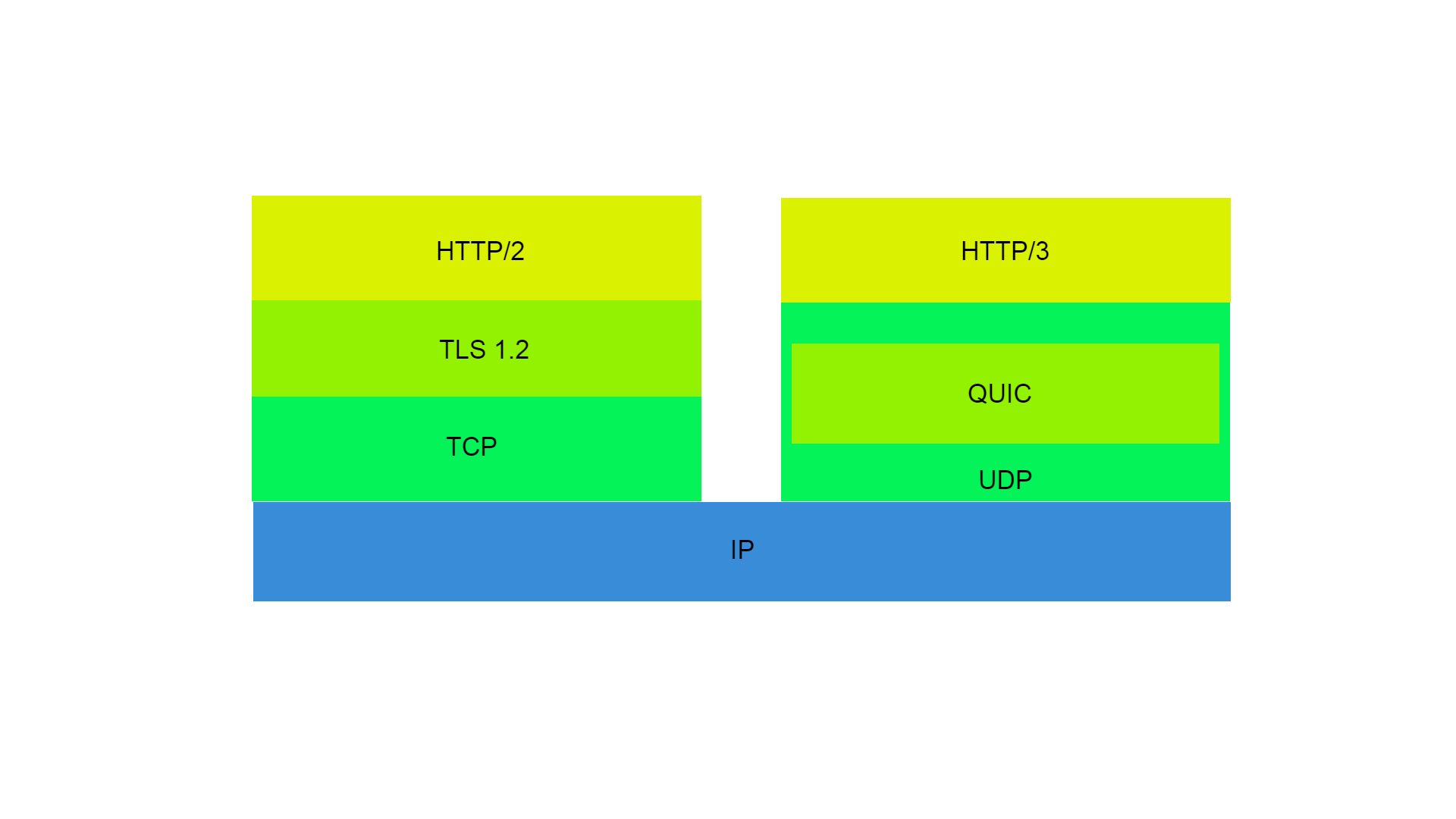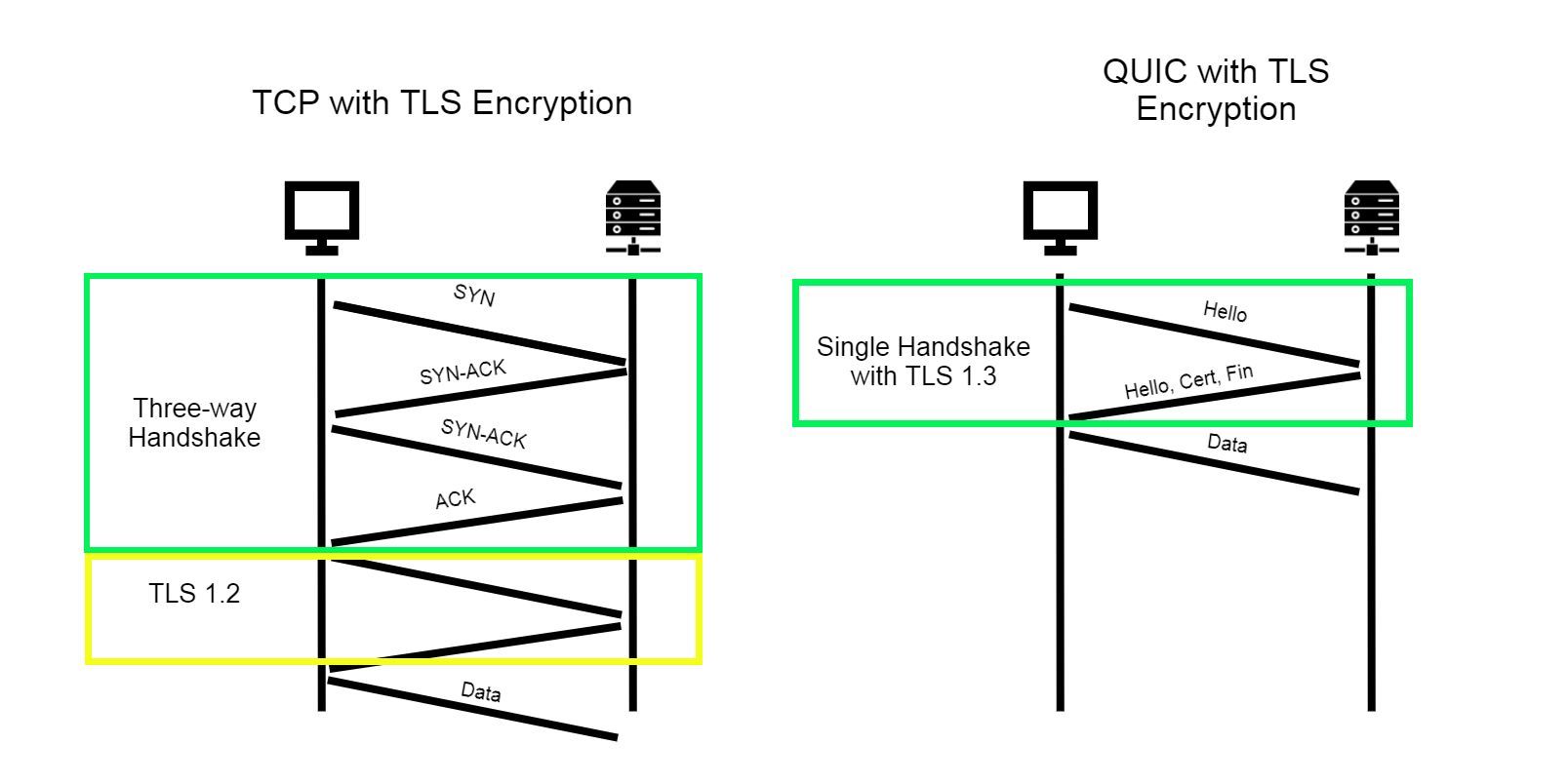In the past, the public primarily used web browsers to enter chatrooms and visit blog sites. Today, web browsing has become a place to watch 4K videos, edit photos, play games, shop, bank, work, and so much more.
As new web apps become increasingly complex, the demand for a secure and more efficient internet protocol has pushed for the development of HTTP/3.
So what is HTTP/3? How is it better than the previous versions, and how does it impact your browsing experience?
What Is HTTP/3?
HTTP/3 is the third (and newest) generation of HTTP (Hypertext Transfer Protocol). This internet protocol is used in the application layer, where users are given the capability to interact with the web and its resources. HTTP/3 aims to provide a faster and more efficient internet experience without compromising security.
With the previous HTTP/2, users and developers only had TCP/IP to transport data reliably. The problem with TCP is that the client and server need to perform a series of SYN-ACK connections to initialize properly. Only after the handshake and TLS connection can the client and server send data to each other.
With the process taking around four "round trips" from client to server, users experience slower load times when accessing the internet. HTTP/3 will solve this problem with its newer features.
Some key HTTP/3 features include:
- HTTP/3 comes built-in with TLS 1.3 encryption for security
- QPACK compresses requests and headers instead of HPACK
- Provides fast and reliable single handshake connections through QUIC
- All frame headers and payloads (data) are under flow control for smoother data transfers
How HTTP/3 Provides Fast, Reliable, and Secure Connections
One of the advantages of HTTP/3 is its support for the new internet protocol meant to replace TCP connections, known as the QUIC protocol. Using QUIC, data is sent and received by the client and server after a single handshake. This single handshake provides a reliable connection from both parties and automatically encrypts data as HTTP/3 comes built-in with TLS 1.3 encryption.
A Request Metrics study shows that relying on QUIC instead of TCP provides a faster and more efficient way to initialize connection and encrypt data. The test shows how efficient QUIC's single handshake is compared to TCP's three-way handshake plus encryption.
So how is it possible to have a fast, reliable, and secure connection just through a single handshake?
Let's first compare how HTTP/2 and HTTP/3 relay data to answer the question.
As you can see in the image above, HTTP/3 uses the fast but unreliable UDP connection. For those who don't know, UDP sacrifices reliability to establish a quick connection through a single-handshake or one round trip.
To combat issues of UDP, QUIC provides native multiplexing and implements packet checking and recovery protocols for a reliable connection. At the same time, HTTP/3's auto TLS protocol provides seamless encryption without adding another back and forth between the client and server.
With UDP's single-handshake connection, QUIC's native multiplexing, and HTTP/3's auto TLS connection, we get a fast, reliable, and secure connection that ultimately provides a better user experience.
How Big of an Impact Will HTTP/3 Have?
We have established that HTTP/3 will improve your experience by providing a faster and more efficient internet connection. The question is, by how much?
The same Request Metrics study also showed how efficiently web pages loaded when using HTTP/2 and HTTP/3 looked at how fast data was being relayed on three different-sized websites, including a small site, a content site, and a single-page site.
Here is the result:
|
Small Site |
Content Site |
Single-Page Site |
|
|---|---|---|---|
|
HTTP/2 |
500ms |
1000ms |
600ms |
|
HTTP/3 |
100ms |
675ms |
300ms |
The results show that HTTP/3 was much faster than HTTP/2 in all test sites. For example, on the small site, HTTP/3 was faster than HTTP/2 by 200ms, 325ms on a content site, and 300ms on a single-page site.
By using HTTP/3, users can expect a significant reduction in delays overall, making your browsing experience faster and more reliable without compromising security.
HTTP/3 Is All Set to Replace HTTP/2
Overall, HTTP/3 is the current standard being implemented today. Therefore, end users don't have to do anything to enjoy its benefits since you're probably using it already. In fact, you may also be using the QUIC protocol as Google has already implemented it on most if not all of its web apps and services.



